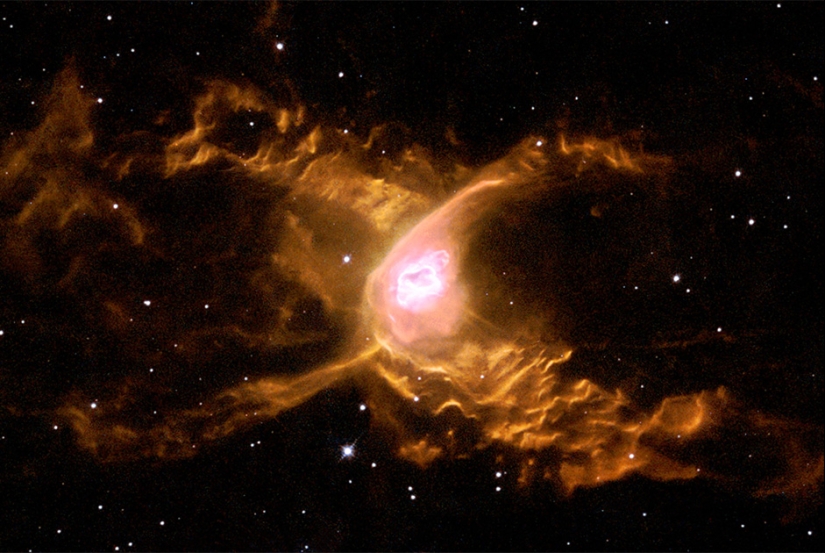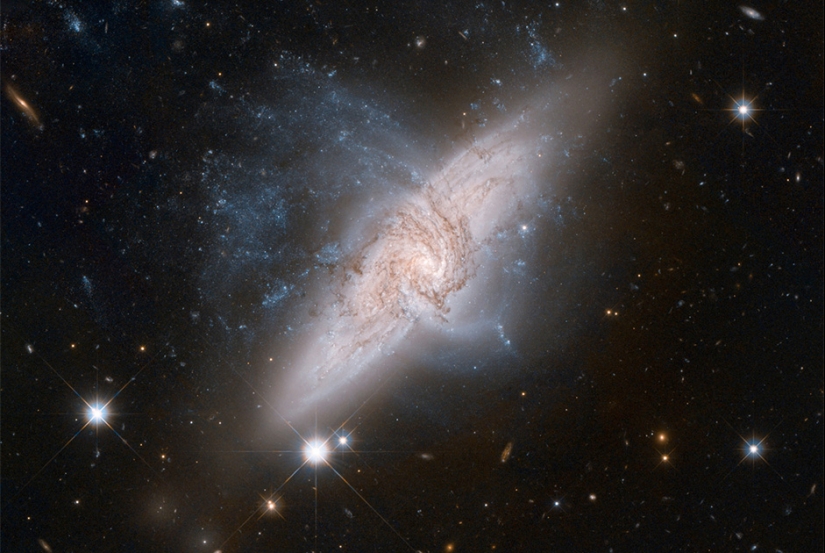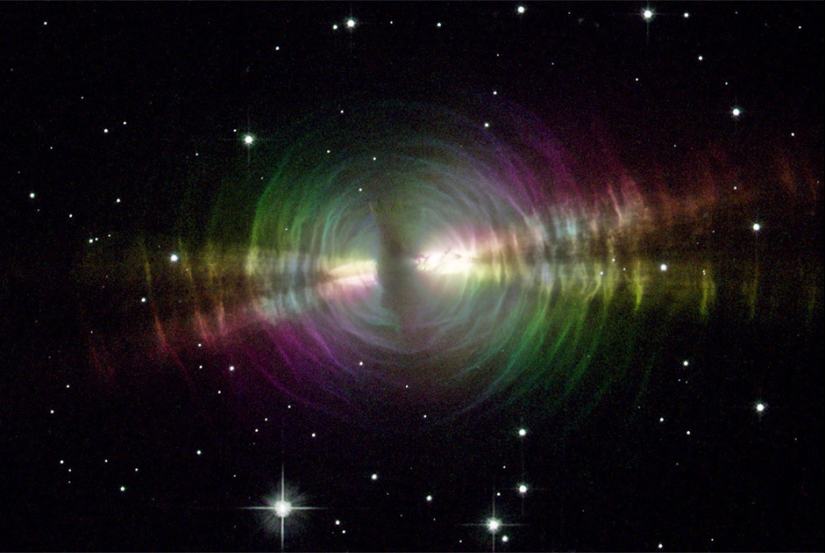From the void: the most mysterious and inaccessible places of the Universe in images of the Hubble telescope
Categories: Science | Space | World
By Pictolic https://pictolic.com/article/from-the-void-the-most-mysterious-and-inaccessible-places-of-the-universe-in-images-of-the-hubble-telescope.htmlBy the end of 2019, the magazine The Atlantic has compiled the main pictures of the cosmos taken by the spacecraft the Hubble Space Telescope. This satellite with a mirror diameter of 2.4 meters is able to show the farthest reaches of space and make high-quality images of these objects.
The gallery contains some of the most breathtaking images of the cosmos, depicting the processes of birth and death of stars, their shining remains of the collision of galaxies, structures on a universal scale and phenomena arising from the curvature of space and time.


"Huge Shell Of Light"
Whirlwinds of dust, orbiting trillions of kilometers of interstellar space in the form of an expanding halo of light around a distant star called "V838 of the Unicorn", light a giant cloud. The glow comes from red super-giant star in the center of the image, which is emitted similar to the flash pulse of light. The photograph shows the progress made by the light pulse, after two years of traveling from stars in all directions, captured Hubble February 8, 2004. "V838 of the Unicorn" is about 20 thousand light-years from Earth in the direction of the constellation "the Unicorn", at the outer edge of the milky Way.

"An Addictive Spiral"
This picture of the spiral galaxy M100 is cleared to "Wide angle camera 3", installed on the Hubble in 2009. Bright yellow color in the center of M100 due to the glow of old stars, and the edges of the galaxy are young blue stars. M100 is at a distance of 55 million light years from the Sun and contains over 100 billion stars.
"Mysterious Mountain"
In 2010, the Hubble took a picture of the Carina nebula (NGC 3372) at a distance of 7.5 thousand light-years from Earth. The image captures the chaotic activity atop a pillar of gas and dust with a height of three light-years, which lights up the light of nearby bright stars.

"Star Shell"
The picture shows the field of SNR 0509-67.5 — the remnant of a supernova that erupted around 400 years ago. It is located in a neighboring galaxy, the Large Magellanic Cloud at a distance of more than 160 thousand light-years from Earth. Gas shell as a bubble, removed the "Hubble" in 2006, has a diameter of 23 light years and is expanding at a rate more than five thousand kilometers per second.

"Red Spider"
This bilobed planetary nebula, the Red Spider (NGC 6537) is at a distance of about 3 thousand light-years from Earth in the constellation Sagittarius. It consists of the hottest known stars.

"Equalizing Chances"
This picture of the pair of overlapping galaxies NGC 3314 was received in 2012. It seems that these two galaxies collided, but in fact it is a trick of perspective — they are at a distance of ten million light years.
"The Lagoon Nebula"
The nebula stretches across 55 light-years in width and 20 light years in height. The picture captures only a small part, located at a distance of about 4 thousand light years. The photo was taken in 2018, and it managed to capture the high activity within the nebula.

"Celestial Smiley Face"
In the center of this frame there are two faint galaxies that seem to form a smiley face (or the snowman's head). The eyes are galaxy SDSSCGB 8842.3 and SDSSCGB 8842.4 and the misleading smile lines are actually arcs caused by an effect known as strong gravitational lensing.

"A Huge Glowing Caterpillar"
For the Carina nebula are numerous dense accumulations of gas and dust, called globules, including this one, which resembled a huge caterpillar. The globules are relatively small, dark and cold region, consisting of molecular hydrogen, carbon oxides, helium and dust. The glowing edge of the caterpillar indicates that it photoionizes the hottest stars in the surrounding cluster.

"The Iris Around Aging Stars"
In the Egg nebula, located at a distance 3 thousand light years, it is possible to look at the unique shell of dust hiding an old star. This dust is located at a distance of one-tenth light year from the star and forms a concentric ring around the star.

"Space Light Saber"
Two narrow stream that crosses the image is a jet of gas ejected from the poles of young stars in the Orion Cloud located just over 1350 light years from Earth. At collision of jets with the surrounding gas and dust they can clear a huge space and to create a curved shock wave, seen as nodular clusters, called objects herbage Aro.

"Close Contact"
In this picture of Hubble 2013 shows two interacting galaxies. NGC 2936 at the top, once a standard spiral galaxy, and NGC 2937 at the bottom, a smaller elliptical galaxy. The pair, known as Arp 142, is similar to a penguin guarding its egg. Gravitational chaos caused by the close interaction, twists NGC 2936 and gradually tearing him apart.
"Giant Pillar"
Resembling a nightmarish beast, raises its head from a crimson sea, this celestial object is called the Cone nebula, actually is a just a pillar of gas and dust located at a distance of 2,500 light-years from Earth. This photo shows the top of 2.5 light-years of the cone, the whole pillar has a length of 7 light years.

"Spiral Within Spiral"
The picture shows the surroundings of the galaxy NGC 1433, a distance of about 32 million light-years. This is a type of very active galaxy known as a Seyfert galaxy with a bright center.
Keywords: Deep space | Open | Photos from space
Post News ArticleRecent articles

All cultures, countries and different Nations, each nation has its own traditions and customs. But one thing remains common — ...

They say that absolutely everything that is made of chocolate is delicious. And apparently, Sarah Hardy agrees with this opinion. ...
Related articles

Today it is fashionable to speculate about the possibility of colonization of Mars and to argue about the representative of some of ...

Dozens of everyday things we mistake for the achievements of the present or recent past. Which is not surprising, because these ...

Mummies can't talk, but research remains provide answers to many questions about the development of human civilization. This monk ...

New Jersey photographer Robin Schwartz photographed her adorable daughter Amelia with a variety of animals from 2002 to 2015. The ...